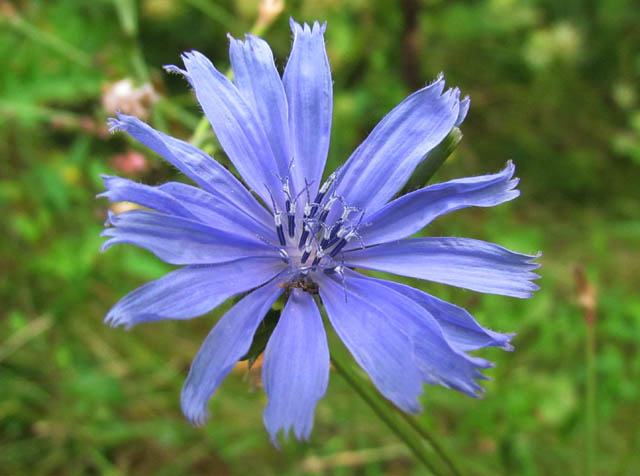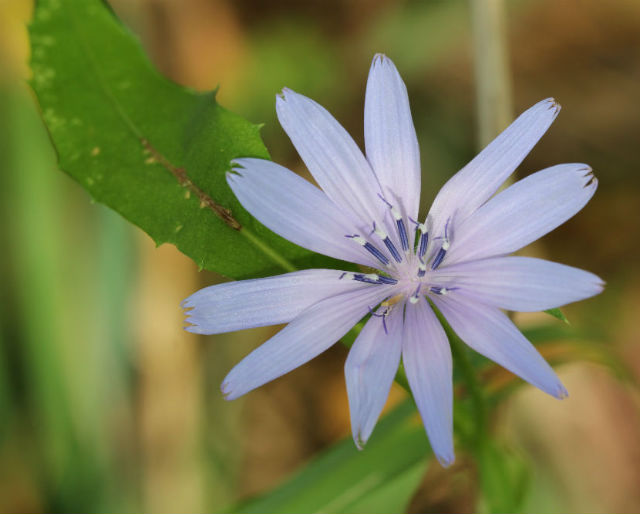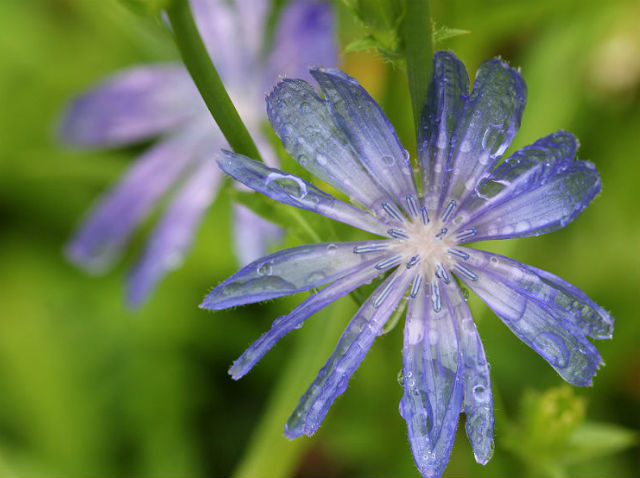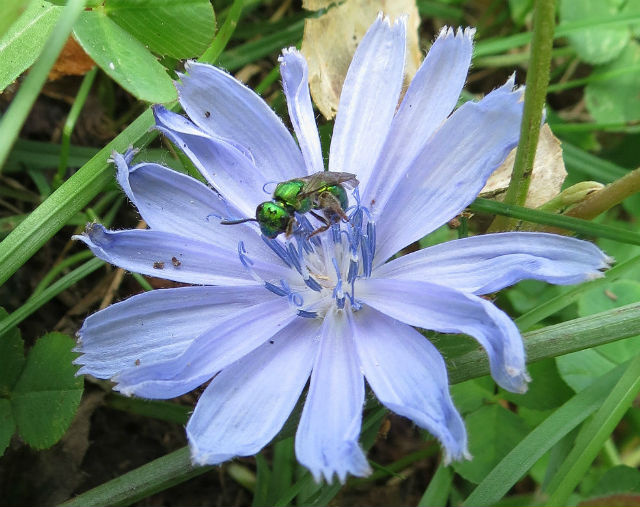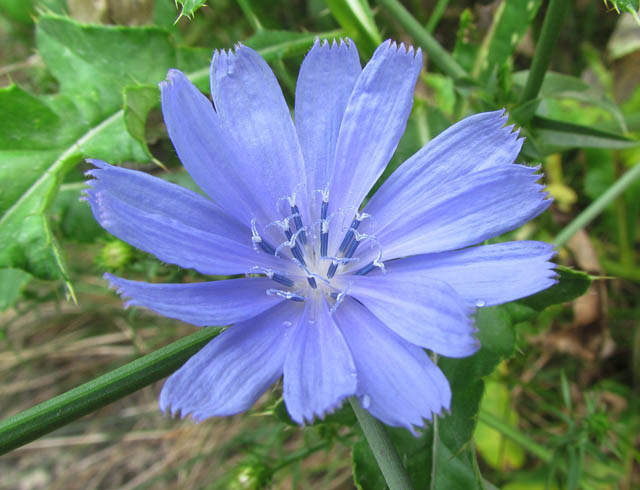This is a wildflower that I frequently see blooming along roadsides at this time of the year. It produces sky blue flowers after living through one winter. These plants actually prefer being near hot rocks or other debris in the soil – this is one reason it thrives along edges.
Around here Chicory seems to spring up everywhere with its bright blue dandelion-like flowers that open and close with the sun. It has a long blooming period from mid-Summer into Fall.
Its stems are thick and strong and 2 to 5 feet tall with few small long, narrow, and often upright leaves. This plant is not native to the United States, but has distribution all around the world.
Chicory has been in cultivation since the days of ancient Egypt. Horticulture enthusiast and president Thomas Jefferson planted Chicory in his gardens, recommending it in a letter to George Washington as “one of the greatest acquisitions a farmer can have.”
Many varieties are cultivated for salad leaves, in addition, its roots can be baked, ground, and used as a coffee substitute and additive.
Chicory is also known as blue daisy, blue dandelion, blue sailors, blue weed, bunk, coffeeweed, cornflower, hendibeh, horseweed, ragged sailors, succory, wild bachelor’s buttons, and wild endive


